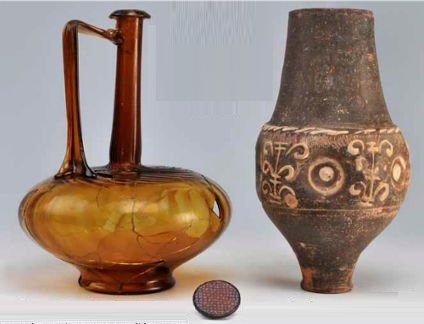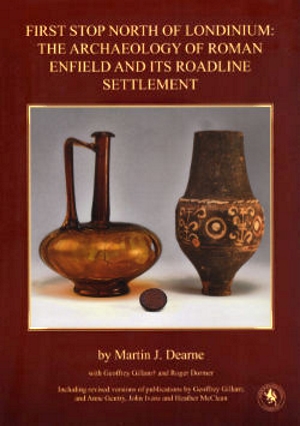 The latest publication by the Enfield Archaeological Society (EAS) provides a definitive description and analysis of all the known Roman archaeology in the London Borough of Enfield.
The latest publication by the Enfield Archaeological Society (EAS) provides a definitive description and analysis of all the known Roman archaeology in the London Borough of Enfield.
First Stop North Of Londinium: The Archaeology of Roman Enfield and its Roadline Settlement has been written by Martin J. Dearne with contributions by Geoffrey Gilbert and Roger Dorner. The title refers to the fact that the settlement that grew up around Ermine Street - an important Roman road linking London and York - was a day's journey from Roman Londinium and hence a stopping-off point.
The book can be bought online from the EAS using PayPal or you can send a cheque. For more information visit www.enfarchsoc.org or contact .
First Stop North Of Londinium:
The Archaeology of Roman Enfield and its Roadline Settlement
 £33.50 inc. p&p (uk delivery only)
£33.50 inc. p&p (uk delivery only)
A definitive description and analysis of all the known Roman archaeology in the north London borough of Enfield, this monograph brings together antiquarian finds and re-presented and augmented reports on work from the 1950s to 1970s with the more recent excavations of the EAS as well as Museum of London Archaeology.
With prefatory chapters on aspects of the area including its prehistory, the volume documents what is known of the settlement that grew up here alongside Ermine Street, the road itself, a possible tannery, other settlement sites and often higher status burials.
A synthetic chapter examines the role of all small roadside settlements around Londinium in terms of function, chronology and their relationship to the provincial capital and discusses the possible economy of this area of the Lea valley.
With full illustrated stratigraphic and finds reports for over 45 individual sites (including samian ware, brooches, metalwork and important Roman glass finds), it presents the evidence for what may have been a broadly rural landscape, but with a quasi-urban settlement that may have reflected the needs of a cursus publicus system operating along one of the main roads of the province.
355 pages; 137 black and white and colour figures; 19 black and white and colour plates.



